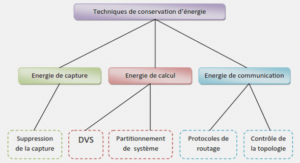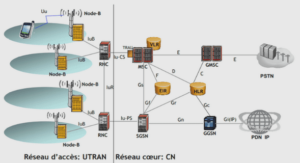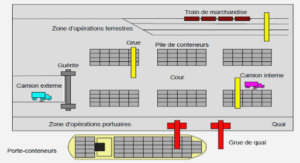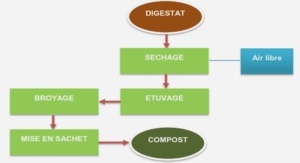Cloud characteristics and models
Based on National Institute of Standards and Technology (NIST) definition of cloud model, it is composed of five essential characteristics, three service models, and four deployment models. For sake of simplicity in this document, sometimes we refer to « cloud computing » shortly as « Cloud ». Essential characteristics of the cloud are: on-demand self-service, broad network access, resource pooling, rapid elasticity and measured service. On-demand self-service means that a cloud consumer can unilaterally provision computing capabilities, such as server time and network storage, as needed automatically without requiring human interaction with each service provider. Broad network access feature implies that cloud users can access capabilities over the network through standard mechanisms that promote use by heterogeneous thin or thick client platforms. In the cloud model, computing resources of the provider are pooled to serve multiple consumers using a multi-tenant model.
This is done by assigning and reassigning different physical and virtual resources dynamically according to consumer demand. Rapid elasticity means Cloud is capable of provision and release the resources, to scale rapidly outward and inward commensurate with demand. The key to creating a pool of resources is to provide an abstraction mechanism so that a logical address can be mapped to a physical resource. Virtualization refers to the act of creating a virtual version of something, including virtual computer hardware platforms, computer network resources, operating systems and storage devices. Services in cloud are typically measured in pay-per-use basis. Cloud systems automatically control and optimize resource use by leveraging a metering capability at some level of abstraction appropriate to the type of service. Resource usage can be monitored, controlled, and reported, providing transparency for both the provider and consumer of the utilized service. According to Bittman (2009) virtualization is a key enabler of the key attributes of cloud computing mentioned as: service-based, scalable and elastic, shared services, metered usage and Internet delivery.
When enterprise architects and network planners want to plan cloud computing deployments, they need to be able to identify the expectations for control and management, based on the type of cloud and its level categorization. One categorization can be based on kind of the service which cloud provides, such as Software as a Service (SaaS), Platform as a Service (PaaS), and Infrastructure as a Service (IaaS). Another classification can be based on the models for cloud computing deployment, which relate to strategies for extending virtualization outside of the data center into the cloud. Deployment models include: public cloud, private Cloud, hybrid cloud and community cloud. Each cloud service model provides a level of abstraction that diminishes the efforts required by the service consumer to build and deploy systems. Unlike cloud, in a traditional on-premises data center, the IT team has to build and manage everything. Figure 2.1 shows these models and the layers of the cloud which is managed by cloud consumers. Note that layers in MULQA are an abstraction for the level of components which exist in the cloud system and they are different from the kind of service levels obtained from cloud systems such as SaaS, PaaS and IaaS.
In IaaS, the capability provided to the consumer is to provision processing, storage, networks, and other fundamental computing resources where the consumer is able to deploy and run arbitrary software, which can include operating systems and applications. The most mature and widely used public IaaS cloud service provider is Amazon Web Services (AWS) (Kavis (2014)). On the other hand, for providing IaaS in private clouds, currently Openstack is the well-known solution as mentioned in Jiang (2015). PaaS service model provides the capability to the consumer to deploy onto the cloud infrastructure consumer-created or acquired applications created using programming languages, libraries, services, and tools supported by the provider. Some of the services that can be found in most mature PaaS solutions are: database, logging, monitoring, security, caching, search, E-mail. SaaS provides the capability to the consumer to provision processing, storage, networks, and other fundamental computing resources where the consumer is able to deploy and run arbitrary software, which can include operating systems and applications. In this model, the underlying cloud infrastructure is not controlled by the consumer.
Quality model
Following the definition of quality, in ISO (2007), quality model is as a defined set of characteristics, and of relationships between them, which provides a framework for specifying quality requirements and evaluating quality. Also Deissenboeck et al. (2009) has defined quality model as a model with the objective to describe, assess and/or predict quality. Regarding to Heston and Phifer (2011) some of the reasons for formulating a quality model are: awareness, motivation, consistency, repeatability and communication. According to Ardagna et al. (2014), quality modeling discipline in cloud computing can be categorized to control theory based, machine learning based or operations research based (i.e. optimization, game theory, bio-inspired algorithms). Each of these approaches has its own usages and advantages. As mentioned in Padala et al. (2007), the advantage of control theory is guaranteeing the stability of the system upon workload changes by modeling the transient behavior and adjusting system configurations within a transitory period. Machine learning tech16 niques, rather, by utilizing learning mechanisms, can capture the behavior of the system with no explicit performance or traffic model. Furthermore, this approach needs minimal built-in system knowledge. However, according to Kephart et al. (2007), training sessions sometimes can take several hours and also for evolving workloads retraining is required.
The goal of operations research approaches is optimizing the degree of user satisfaction which are expressed in terms of user-level quality metrics. Ordinarily, these approaches comprise of a performance model embedded within an optimization program, which is solved either locally, globally, or heuristically. The main application of quality models is optimal decision-making for cloud system management. According to Ardagna et al. (2014), these decision problem areas include capacity allocation, load balancing, admission control, pricing, resource bidding, and provider-side energy management. The notion of quality is decomposed into a number of Quality Attributes (QA) which can each be decomposed further. For example, maintainability, security, or usability, can be such a quality attribute. The quality attributes are a kind of concerns. As discussed in Cesare and Xiang (2012) a ‘standard’, closed-form, list of relevant quality attributes applicable to every system doesn’t exist. The relevancy of a quality attribute fluctuates with respect to the type of system. For example in section 1.2.3 of Suryn (2013), the most relevant quality attributes for « Network management systems » are specified as fault tolerance, interoperability, and operability; In the other hand for « Telecommunication systems », the most relevant quality attributes are functionality, reliability, usability, and efficiency; And for « Decision support systems », the most relevant quality attributes are accuracy, analyzability, and suitability.
Quality Challenges in Cloud Computing
The root of the challenges in figuring a quality model has significant variations in context. Formulating a quality model generally presents some challenges rooted in the domain, stakeholders and artifacts. In theory, many quality models, including those in current international standards, aim to be general and abstract enough to be applicable for all sorts of systems. However, in practice, as discussed in Moody (2005) and Ruhe and Wohlin (2014), there are a number of challenges in applying these models sustainably. These challenges include: universality (Ruhe and Wohlin (2014)), need for tailoring and cost-effectiveness (Jagannathan et al. (2005)) In addition to these challenges related to formulating and using quality models mentioned previously, there exist some other cloud computing domain-specific challenges in quality topic. Many years before the advent of cloud computing, QoS and quality in computer systems have been studied and discussed. But quality analysis, prediction, and assurance in cloud platforms has got significantly complex due to performance heterogeneity and resource isolation mechanisms. According to Petcu et al. (2013), this is prompting several researchers to investigate automated quality management methods that can leverage the high programmability of hardware and software resources in the cloud.
Despite the fact that the cloud has enormously simplified the resource provisioning process, it represents several new challenges in the quality management. QoS in cloud context usually indicates the levels of performance, reliability, and availability offered by an application and by the platform or infrastructure that hosts it. QoS is crucial for both cloud providers, who need to find the right tradeoffs between QoS levels and operational costs, and for cloud users, who expect providers to deliver the advertised quality attributes. However, as mentioned in Ardagna et al. (2012), SLAs by specifying quality targets and economical penalties for SLA violations, increase the complexity of finding optimal tradeoff. However, Quality as a general term in software engineering, can include the common QoS concepts, as well as cost and some other quality attributes such as energy-efficiency. On the other hand, instead of quality, QoS is used generally in network-specific context. Hence, this thesis mostly mentions Quality rather than QoS to generalize the quality concept. According to Abdelmaboud et al. (2015), surveys on quality challenges in cloud computing can be classified in two categories: (1) Quality-aware software engineering challenges, (2) Quality-aware resource management challenges.
|
Table des matières
INTRODUCTION
CHAPITRE 1 REVUE DE LITTÉRATURE
1.1 Contraintes et exigences du travail en mine profonde et ultra-profonde
1.1.1 Définitions
1.1.2 Lois et règlements au Québec
1.1.3 Équipements de protection individuelle
1.1.4 Règles des compagnies minières
1.1.5 Durée du quart de travail et temps effectif de travail
1.1.6 Facteurs environnementaux
1.1.7 Chaleur
1.1.8 Humidité
1.1.9 Pression barométrique
1.1.10 Bruit et vibrations
1.1.11 Poussières et boue
1.1.12 Diesel et autres gaz
1.2 Exigences
1.2.1 Hommes et femmes
1.2.2 Force
1.3 Critères de conception d’un équipement de protection individuelle
1.4 Question de recherche
CHAPITRE 2 MÉTHODOLOGIE
2.1 Démarche méthodologique du mémoire
2.1.1 Comité d’éthique de la recherche
2.2 Étude de terrain
2.2.1 Taille et type d’échantillon
2.2.2 Durée
2.2.3 Lieu (Abitibi-Témiscamingue)
2.2.4 Entrevues semi-dirigées
2.2.5 Observation directe du travail
2.2.6 Mesures des conditions environnementales
2.3 Outils utilisés pour traiter les données
2.3.1 Entrevues semi-dirigées
CHAPITRE 3 ERGONOMIC CRITERIA FOR THE DESIGN OF A COOLING VEST IN DEEP AND ULTRA DEEP MINING ENVIRONMENTS
3.1 Introduction
3.2 Background
3.3 Research problem
3.4 Methodology
3.5 Results
3.5.1 Miners’ Receptivity Towards a New PPE
3.5.2 Population
3.5.3 Occupation
3.5.4 Shift and Break Times
3.5.5 General Work Environment
3.5.6 Personal Protective Equipment
3.5.7 Impact on the Worker’s Body
3.5.8 Concerns About a New PPE
3.5.9 Additional Criteria Established by Normal PPE Development Literature
3.6 Final Matrix Setup
3.7 Discussion
3.7.1 Limited Number of Participants and Time Constraints
3.7.2 Population
3.7.3 Variability of Working Environment Conditions
3.7.4 Price of Equipment
3.7.5 Impacts on the Worker’s Body
3.8 Conclusion and Future Research
3.9 Acknowledgments
CHAPITRE 4 OBSERVATIONS DU MILIEU DE TRAVAIL
CONCLUSION ET RECOMMANDATIONS
ANNEXE I LISTE DES PUBLICATIONS
ANNEXE II ARTICLE DE CONFÉRENCE AHFE 2016
ANNEXE III AFFICHE AQHSST
ANNEXE IV POWER POINT MIDI-ÉREST
ANNEXE V APPROBATION DU COMITÉ D’ÉTHIQUE À LA RECHERCHE
ANNEXE VI QUESTIONNAIRE ENTREVUES SEMI-DIRIGÉES
ANNEXE VII GRILLE D’OBSERVATION DES TRAVAILLEURS
ANNEXE VIII GRILLE DE MESURE DES CONDITIONS ENVIRONNEMENTALES
LISTE DE RÉFÉRENCES BIBLIOGRAPHIQUES
![]() Télécharger le rapport complet
Télécharger le rapport complet






